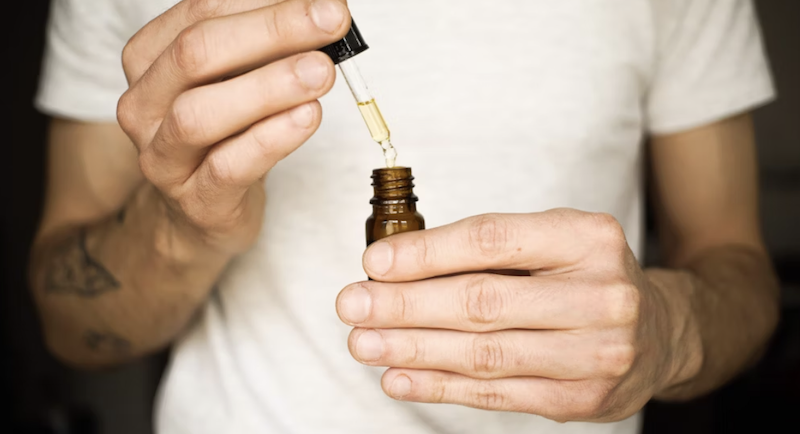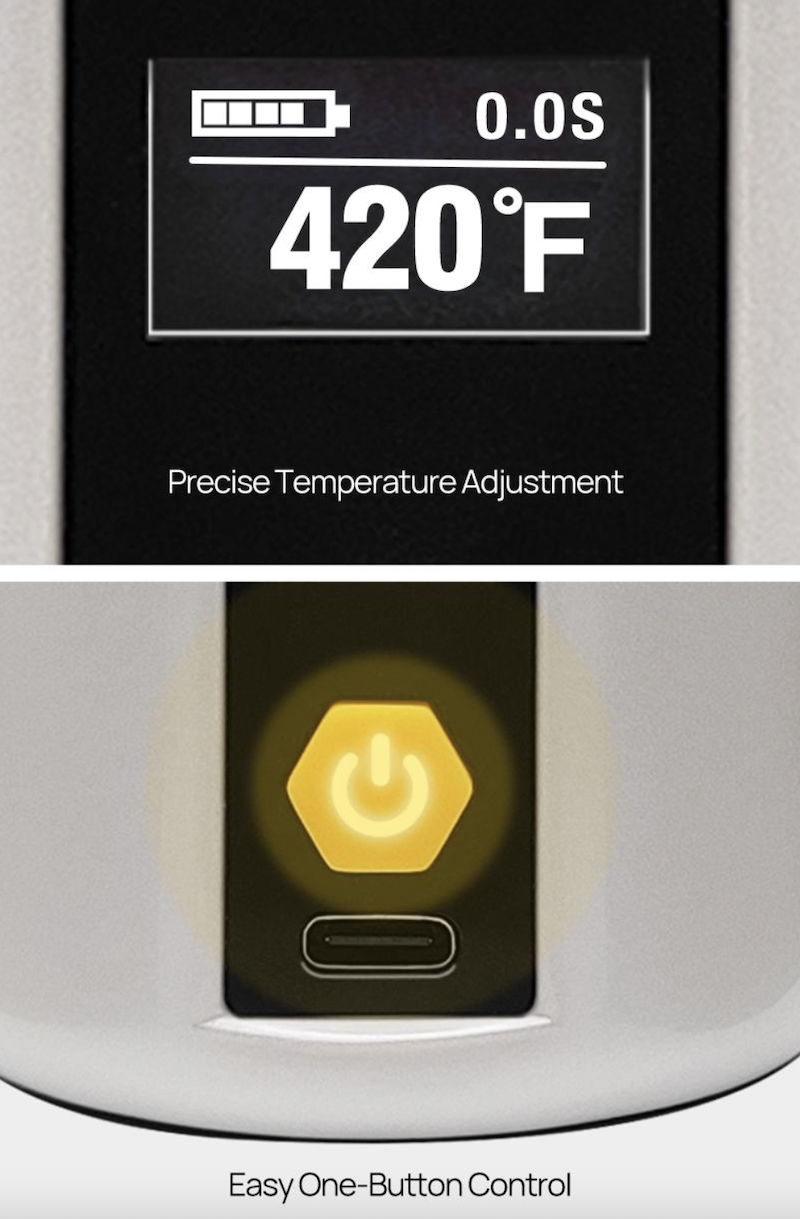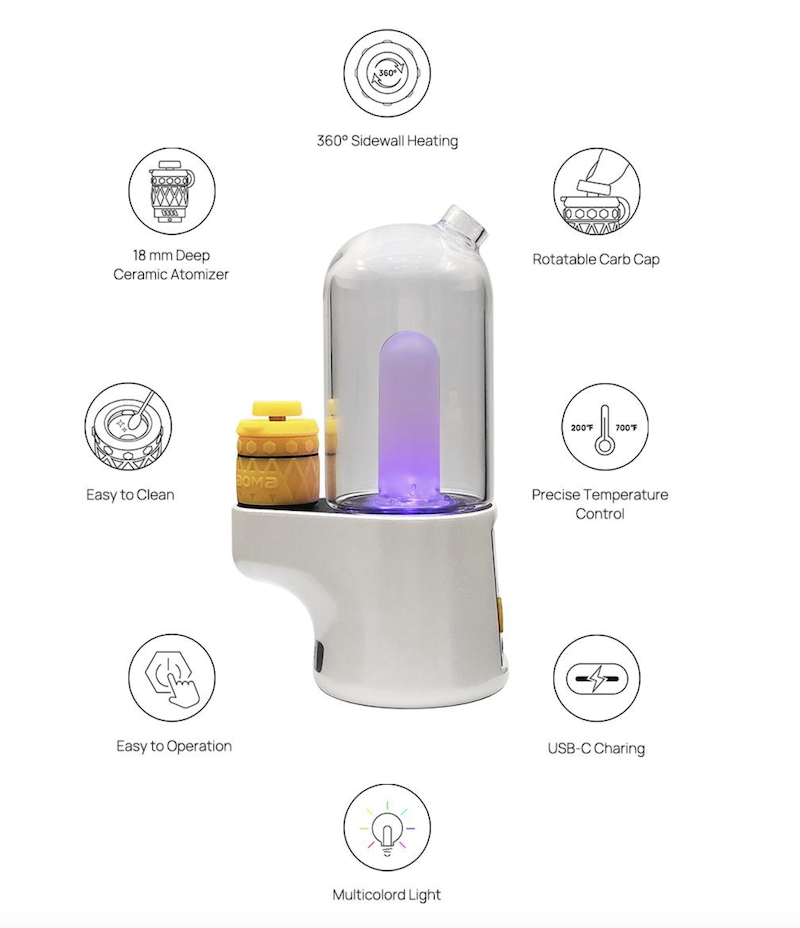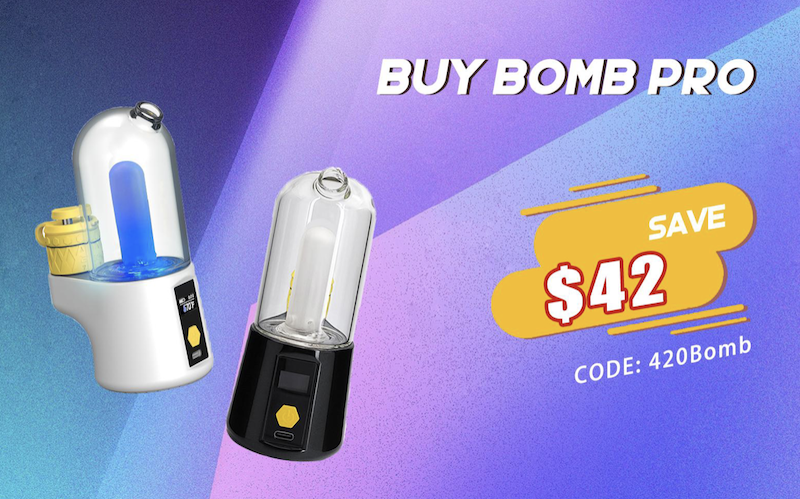Pot Luck
What is cannabis high stress training?
Published
1 year agoon
By
admin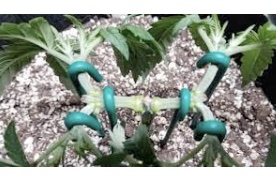
Cannabis high stress training (HST) is a growing technique used to manipulate the growth pattern of a cannabis plant to increase its yield and produce bigger, bushier plants. The goal of HST is to stress the plant in a controlled way so that it responds by growing more branches and buds.
What is the difference between LST and HST cannabis?
LST (low stress training) and HST (high stress training) are two different techniques used to manipulate the growth of cannabis plants to increase yields and improve overall plant health. The main difference between LST and HST is the level of stress applied to the plant.
LST involves gently bending and tying down the branches of the plant to encourage them to grow horizontally. This technique is considered low stress because it doesn’t involve cutting or breaking any part of the plant. Instead, LST works by directing the growth of the plant to promote more even canopy growth, increase light exposure to the lower branches, and promote the development of multiple colas (flowering sites). LST is typically performed during the vegetative stage of growth and is considered a gentler and less risky technique than HST.
HST, on the other hand, involves physically stressing the plant in a more aggressive manner. HST techniques such as topping, fimming, super cropping, and ScrOG involve cutting or bending the plant in a way that creates a significant level of stress. These techniques are typically used to promote even canopy growth, increase the number of colas, and maximize light exposure to the plants. HST can be effective for increasing yields, but it can also be risky and stressful for the plant, and requires more experience and skill to perform correctly.
What are the most popular methods of HST training?
The three most commonly used methods of HST are fimming, topping and super cropping.
Topping: This involves cutting off the top of the main stem, which causes the plant to grow two new branches at the site of the cut.
Fimming: This is similar to topping, but instead of cutting off the entire top of the plant, only a portion of it is removed, which leads to the growth of four new branches.
Super cropping: This involves bending the stems of the plant until they almost break, which causes the plant to produce more branches and buds in response.
HST can be a useful technique for experienced cannabis growers who are looking to increase their yields, but it should be done with care because it can also be stressful for the plant and damage yields if it is not done correctly.
Can you use high stress training with autoflowers?
Yes, high stress training (HST) techniques can be used with autoflowering cannabis strains, but it’s important to use caution and choose the right methods.
Autoflowering strains have a shorter vegetative stage and a predetermined life cycle, so any stress placed on the plants could potentially affect their growth and yield. In addition, since autoflowers flower automatically based on age, HST techniques should be applied earlier in the plant’s life cycle, usually during the first few weeks after germination.
Some HST techniques, such as fimming or topping autoflowers, may not be suitable as they can delay or stunt the growth of the plant. However, other techniques such as LST (low stress training) and super cropping can be used to increase yields and promote even canopy growth without harming the plant.
LST involves gently bending and tying down the branches of the plant to encourage them to grow horizontally, while super cropping involves carefully bending the stems to create new growth nodes. These techniques can be effective with autoflowering strains as long as they are performed carefully and early in the plant’s life cycle. It’s important to research and understand the specific needs and characteristics of the autoflowering strain being grown before attempting any HST techniques.
How much more can you expect to yield using high stress training with cannabis?
The increase in yield that can be achieved through high stress training (HST) with cannabis will depend on several factors, including the strain being grown, the specific HST techniques used, and the skill and experience of the grower.
In general, HST techniques are used to promote more even canopy growth, increase the number of colas (flowering sites), and maximize light exposure to the plants, all of which can lead to higher yields. Some growers have reported increases in yields of up to 30% or more although this really depends on the experience of the grower.
When should you start high stress training?
The ideal time to start high stress training (HST) with cannabis will depend on the specific HST technique being used and the stage of growth of the plant.
In general, HST techniques should be started during the vegetative stage of growth, when the plant is still producing new leaves and branches and before it begins to flower. The exact timing will depend on the strain being grown, but most growers start HST techniques when the plant has developed 3-5 nodes (sets of leaves).
Some HST techniques, such as topping and fimming, are more aggressive and should be performed earlier in the plant’s life cycle to allow time for recovery and new growth. Other techniques, such as LST (low stress training) and super cropping, can be performed later in the vegetative stage when the plant has developed more branches and is better able to handle the stress.
Can you use high stress training on any autoflowers?
As we have mentioned some HST training methods such as topping can be done on autoflowers, however due to the stress they put the plant under it does pose a risk because of the short vegetative stages of autoflowers. Autos go from seedling to flowering within four weeks, leaving little to no time for recovery. However, sativa autoflowers do have slightly longer flowering stages and actually continue to grow while they are flowering. So if you are going to top an autoflower make sure it is a sativa with a longer flowering time to give yourself the best possible chance of success.
You may like
Pot Luck
Tips for Managing Hot Streaks in Online Betting and Ensuring Profits
Published
1 month agoon
June 17, 2024By
admin
We’ve all been there before. You’re having an incredibly lucky day on your favorite online betting site. The underdogs you picked are coming through. Your parlays are hitting. You seem incapable of making a bad wager. You’re on an absolute heater, and you feel like you can walk on water.
As exhilarating as these hot streaks can be, they can quickly turn ugly if you don’t know how to handle them properly. When you’re running good at betting, it’s critical at Kapow Casino to manage your wins wisely rather than getting greedy and giving all your profits back. Here are some tips on how to make the most of your winning streaks in online gambling.
Don’t Chase Your Losses By Betting Bigger
One of the worst things you can do when on a heater is start substantially increasing your bet sizes, thinking your luck will continue indefinitely. However, endless winning streaks are a fantasy. Your luck will eventually run out. Chasing losses by raising bets dramatically when you hit a cold streak is a surefire way to dig yourself into a deep hole.
Be disciplined when wins come easily. Remind yourself these peaks won’t last forever. Keep betting amounts reasonable and aligned with your overall bankroll management strategy rather than throwing discipline out the window in the heat of the moment.
Withdraw Regular Profits
When you’re running hot, it can be tempting to leave all your profits in your betting account to keep chasing the winning buzz. You feel like you can’t lose. However, having a rigid profit withdrawal plan is essential to lock in gains as they come.
For example, you could set a rule to withdraw 30-50% of session profits whenever you’re up 20% or more beyond your starting bankroll for the day. This ensures you bank solid returns rather than giving back profits when your luck turns.
Reinvestment is Key
- Withdrawing 30-50% of session profits helps lock in gains from hot runs
- Save at least 30% of total bankroll to weather future downswings
- Reinvest a share of winnings into types of bets fueling the heater
Avoid Playing Tired or Emotional
One issue that often stops winning runs in their tracks is fatigue or emotional betting. When you’re on an endorphin-fueled heater as a bettor, there’s a desire to keep playing, even when tired or upset over something else in life. However, worn-out or emotionally charged betting often reverses fortunes quickly.
Be self-aware when riding a wave of wins. Pay attention to your mental and physical energy levels. If you feel tired or emotionally volatile, walk away until you regain an even keel. Don’t give profits back due to betting while physiologically or psychologically unfit.
Stick To Sober Betting
Similarly, as excitement builds over a winning streak, some bettors increase drinking or drug use while still actively wagering, lowering inhibitions and discipline. However, compromised decision-making while riding high on a heater is a recipe for disaster.
As the old gambling motto goes, “Scared money don’t make money.” Betting while impaired on alcohol or other substances often leads to reckless, low-percentage bets trying to chase an endless buzz. Maintain sobriety and level-headed decision making to sustain hot streaks.
Manage Your Bankroll For Inevitable Downswings
No matter how hot a betting run you’re on, remember streaks inevitably turn. It’s essential not to invest too much of your overall bankroll when you’re running good, saving dry powder for when your luck turns.
Bankroll management is protecting a percentage of your funds to weather inevitable storms. As a general rule, even in the midst of a winning surge, you should keep at least 30-50% of your total bankroll out of action at any given time to account for looming downturns without going broke.
Pay Attention to Bet Types
When you’re on a winning roll, it’s also useful to analyze what types of bets are working best and drive profits in those areas more aggressively. For example, maybe a particular sport or bet type like live betting suits your style especially well during hot runs. Focus extra funds on your personal strengths when momentum is at your back.
Likewise, identify weaker bet categories that tend to give profits back and avoid those areas. Pay attention to what’s earning and learn your personal rhythms. Then, double down on your individualized profit zones when you have fortune on your side during a winning streak rather than betting evenly across the board.
Track Your Results
Meticulous record-keeping is always vital for sports bettors, and even more so when enjoying winning runs. Many bettors fail to capture full value from hot streaks by not tracking their results in detail, missing opportunities to expand success.
As your wins stack up, note which leagues, bet types, target teams, start times, or other patterns accompany the surge. Then you can replicate those winning formulas more aggressively. Don’t miss the chance to maximize heater profits by tracking every bet in a spreadsheet or journal.
Warning Signs a Winning Streak is Ending
- Making overly aggressive bets trying to chase losses
- Betting while fatigued, emotional or intoxicated
- Losing discipline around bankroll management
- Failure to track each wager’s results in detail
Bottom Line
Sustaining winning runs in betting requires thoughtful bankroll management, sober and disciplined decision-making, and learning your personal rhythms around what’s working. Avoid common pitfalls like emotional and tired betting. Withdraw profits regularly and steer around inevitable downswings. Pay attention to what wins and double down there when momentum rides with you.
Ultimately, winning streaks in betting never last forever. Savor them, but stay grounded in your approach. Use hot runs as a chance to bank profits rather than seeking unrealistic indefinite success. If you ride the wave skillfully, over time betting heaters can dramatically boost your long-term bottom line.
Pot Luck
Understanding CBD Oil: Legal Insights and Benefits
Published
2 months agoon
June 7, 2024By
admin
CBD oil has surged in popularity—thanks to its supposed health advantages and curative properties. However, this ever-increasing interest is accompanied by a complicated legal issue and varying levels of scientific support. In this guide, we’ll explore the benefits of CBD oil as well as its legal status—thus providing a comprehensive overview for anyone who may be interested.
CBD Oil: A Guide on Its Legal Position
The plant cannabis, which was often a topic of discussion, gave rise to two compounds that have transformed the health industry–THC and CBD. The infamous twin, THC, has won fame for being able to make you euphoric and high. Unlike its cousin, though, CBD is highly sought-after by naturopathic believers due to its therapeutic uses. In addition to this positive impact on the body, another awesome thing about CBD is that it doesn’t cause people to become high or alter their consciousness like most drugs do. Its utility in the health industry is why in most states, CBD is already legalized while THC has yet to shed its notoriety.
Although most people tend to perceive CBD more positively compared to THC, there are some variations in its legality across states due to the complexities that arise from federal and state legislations. At the national level, the 2018 Farm Bill allowed the sale of hemp-derived CBD in America provided that it had less than 0.3% THC content. Nonetheless, even when such regulation exists at a national level does not imply legalization in all American states. Some permit only medical usage while others allow both medicinal and recreational based on terms governing the utilization of THC within a particular state.
At the international level, the legality of CBD also varies widely. In some countries like Canada and the UK, CBD is legal but under certain conditions. Meanwhile, other countries maintain strict prohibitions. Significant legal turning points, such as the World Health Organization’s recommendation to remove CBD from international drug control conventions have contributed to the situation at hand. However, despite these advances, legal arguments and impediments persist especially in regard to regulation of CBD products and their claims during marketing.
Cannabidiol Oil’s Health Benefits
Though research on its health benefits continues, a number of areas show promise.
Pain Relief: A lot of users say that it helps them cope with pain, which has been backed by studies showing that CBD can change the way endocannabinoid receptors respond to pain thus helping people with chronic pain.
Anxiety & Depression: Anxiety & depression treatment with CBD is also being examined by researchers whereby some claim that it can help in social anxiety thereby improving depressive symptoms.
Neurological Benefits: Its anticonvulsant nature has been proven in clinical studies, which is why the plant-derived CBD analog called Epidiolex® has been authorized by the FDA as an epilepsy medicine for conditions such as the Lennox-Gastaut syndrome. In addition, there are early findings supporting its potential use in alleviating debilitating symptoms of multiple sclerosis and Parkinson’s disease.
Anti-Inflammatory Properties: The anti-inflammatory effects of CBD are helpful for ailments such as arthritis. Additionally, its capacity to minimize inflammation can play a role in pain relief.
Other Potential Benefits: Recent studies have found that CBD may be used for acne treatment because of its anti-inflammatory and sebum reducing capabilities. Interests also lie in exploring blood pressure lowering possibilities through it associated benefits to the cardiovascular health.
Scientific Evidence and Research
CBD’s potential benefits and mechanisms are being investigated by the scientific community actively. Its effectiveness has been supported by clinical trials in conditions like epilepsy and chronic pain. However, there are limitations including small sample sizes and the need for longer-term studies. To completely understand therapeutic potential and safety profile, experts stress on more rigorous research on CBD.
Practical Considerations
However, those deliberating on using CBD oil must remember some practical aspects.
Dosage and Administration: Start from a low dose then increase gradually while watching how your body is responding. For individuals with underlying health issues or maintenance medications, consulting a health care provider is a must.
Side Effects and Drug Interactions: Although generally well tolerated by the body, CBD may cause adverse effects such as tiredness, diarrhea, and changes in appetite. It can also have interactions with other drugs; hence the importance of seeking professional advice.
Quality and Purity: When dealing with CBD oil, it is important to make sure that one is getting a high quality product because there are so many brands available in the market today. Ensure that you choose products which have undergone third party lab testing for purity and potency.
Consumer Tips: Always look out for transparent labeling, organic certification and customer reviews when purchasing CBD products online or in store. Brands should provide ample information regarding their extraction process as well as the source of hemp they use.
Conclusion
CBD oils continue to intrigue people especially on its integration with natural health benefits amid emerging legislation trends. As much as scientific backing shows potential for use across various health conditions, more research would help understand fully what it entails. Also consumers need to be aware of legal frameworks governing this industry in their respective regions before embarking on a new supplement routine. Therefore, promising possibilities lie ahead for CBD oil’s future due to changing legalities and scientific advancements thus offering hope to people who are looking for a more natural way of healing themselves.

The Bomb Electric Dab Rig is an outstanding device for those seeking to elevate their dabbing experience. This top-notch e-rig is innovatively designed to offer smoother and more flavorful dabs every time.
It has an impressive temperature range that allows for precise temperature control to ensure a more efficient and consistent vaporization.
That’s just a sneak preview of this Bomb Erig. This guide will detail everything you need to know about it. That will include how to use it, how it performs, and how to maintain it to get a clearer picture of what to expect.
Unboxing and Charging the Bomb Electric Dab Rig
Unboxing
The Bomb Erig comes in a clean white box with specifications on the back. The box is well-packaged, and when you open it, you will get a one-page instruction manual, a funnel, and an accessory pack.
The central unit is packed nicely and tightly into an EVA foam insert. It comes pre-assembled (the main body, bubbler, and atomizer are all already set up).
The size and design of this Bomb Erig is impressive. It is compact (3.15” x 5.31”) enough to fit in a hand, making it highly portable. The housing is made of aluminum alloy, while the water chamber is transparent, thick glass. Both materials are strong. The rig feels very solid and stable.
The 18mm atomizer is made of ceramic and enclosed in silicon, so it’s equally durable.
The accessory pack is pretty simple. It includes cotton swabs, a filling tool, and a USB-C charging cable.
Charging
Though the Bomb electric dab rig comes with some charge for the first hit trial, you’ll need to charge it. You just plug it into the wall socket using the provided USB-C cable and let it charge.
When fully charged, the 2300 mAh battery of the rig gives you 16 impressive sessions, with each full session lasting a minute. It’s simply the ideal e-rig for heavy users.
How To Use Bomb Electric Dab Rig
The Bomb Erig makes dabbing easier and hassle-free with its one-button control.
So, if your rig is fully charged, get your concentrate ready, and let’s dive straight into the dabbing experience. Here’s how to use the Bomb electric dab rig for the best results.
- Fill the water chamber: Take the glass chamber off and put water just slightly above the percolator. Put back the glass with the mouthpiece facing back.
- Load your concentrate: Grab the filling tool and scoop up your concentrate. Place the concentrate in the 18mm atomizer bowl and close it using the carb cap.
- Turn on the rig: Click the yellow button five times to turn it on/off and wait 20 seconds for it to preheat (it will show a white flashing light).
- Precise temperature control: Enter the temperature control mode by clicking the button three times. Set the temperature you want. Use single clicks to adjust the temperature one degree at a time. Another option is to long-press the button to increase the temperature to the desired level continuously. Now, release the button and wait 3 seconds to exit the temperature setting mode.
- Heating modes: The Bomb Erig offers two heating modes:
- Automatic: Double-click the button to enter auto-heat mode. Single-click the button to stop automatic heating.
- Manual: Long-press the button to heat the rig manually. Release the button to stop at any desired temperature.
- Take your first dab: Once the 18mm atomizer is heated to set temperature, the rig will show a green pulsing light to indicate it’s ready to use. Now, you’re prepared to take a hit—inhale through the mouthpiece to enjoy your first Bomb Erig dabbing experience.
Note: Whenever you take a dab, you’ll see a colorful pulsing throughout the glowing light strip. It will show multiple colors sequentially.
Performance of the Bomb Electric Dab Rig
Is it your first time using the Bomb Erig? You’ll love it.
With its precise temperature control and quality 18mm ceramic atomizer, the performance of the Bomb Pro is as good as any top electric dab rig out there. It offers a consistent and enjoyable dabbing experience throughout.
First, the Bomb heats up quickly (within 20 seconds) and has an impressive temperature range (400 to 700°F).
Every dab gets you lifted and ripped, no matter the temperature you set. At 500 to 700°F, this rig produces massive clouds that are still flavorful.
The lower temperatures (400°F and below) still deliver decent clouds. If you prioritize flavor, you’ll find these lower temperatures ideal because the Bomb Erig delivers smoother and more flavorful dabs at these temperatures.
The heating is precise and effective, thanks to the ceramic atomizer.
The coils below the atomizer are evenly positioned to ensure the heat spreads throughout the chamber so the concentrate gets fully burned.
The airflow on this rig is also very impressive. The heating chamber has a large air slot/hole that gives excellent airflow to the glass. Even the glass has a large air slot to provide enhanced airflow.
Moreover, the unit has a joystick carb cap that helps push dabs around the atomizer bowl. The result is that every last drop of the dab is vaporized.
Overall, the innovative design and material selection of the Bomb Erig guarantees flavorful, smooth draws every time. With this rig, you can expect huge clouds and the best flavors to elevate your dabbing experience.
Cleaning and Maintaining Bomb Electric Dab Rig
One of the things to like about this Bomb Erig is that it has a simple design that makes cleaning up a breeze. The glass water chamber and the 18mm atomizer are removable for cleaning.
The ceramic atomizer cleans up easily with the cotton swabs in the accessory pack. Wipe the coil with the swab when you want to take another dab.
The glass chamber has a large air path, making cleaning easy. You can submerge the glass chamber in isopropyl alcohol for about 20 minutes for deep cleaning.
Additional Tips for Bomb Electric Dab Rig
The performance of the Bomb Electric is impressive, and its build quality is commendable. Still, though, to ensure your dabbing experience is always great, you must take note of these few things:
- The Bomb’s unique memory function will remember your favorite temperature mode, so you don’t need to keep setting it.
- Clean the atomizer regularly (after every session) to maintain its heating efficiency and prevent it from forming a black coat that might destroy it.
- The glowing light strip has no option to turn it off. So, ensure the rig is off when you are not using it to save on charge and preserve the battery lifespan.
- You’ll see different light signals when using the Bomb electric dab rig. Be keen on these signals to understand what they mean.
- White flashing light signal: After five clicks to turn on the rig, you’ll see the white flashing light signal.
- Multiple pulsing light colors: After turning on, the rig will display multiple colors sequentially as it preheats. The light color will keep changing as long as the rig turns on.
- Green pulsing light: When the 18mm atomizer reaches the set temperature, the rig will display green pulsing light to indicate it’s ready to use.
Use Our 420 Deal To Get a Huge Discount
Do you want a better price for your Bomb electric dab rig?
You now have a chance to save up to $42 when you purchase the e-rig. Use the promo code 420Bomb to get the discount when buying.
If preparing for the 420 celebrations, consider getting this Bomb Erig before the deal runs out.
That sounds good, right? Of course, it does, so visit the Bomb official website and be the early bird to catch this deal while stock is still available.
Elevate Your 420 Dabbing Experience with the Bomb Erig
With its easy control and efficient operation, the Bomb electric dab rig is perfect for those seeking a consistent and enjoyable dabbing experience.
There is no better time than now to get this top-notch e-rig. The 420 celebrations are just around the corner. With the Bomb Erig, you can elevate your experience and that of your friends during these celebrations.
Once you get it and learn how to use it, expect smoother and more flavorful dabs each time.
Meta Description: Have you got the Bomb electric dab rig? Take advantage of our 420 deal now to get a glass for free, as you learn how to use it in this detailed guide.

Pot prohibition costs Florida at least $200 million per year

Union’s initiative to organize Oregon marijuana workers nears ballot

Cannabis and Mental Health: Recent Research and Implications

Why You Shouldn’t Vote for Kamala Harris Just Because of Her Position on Cannabis- Banana in the Tailpipe, Again?

Your Trusted Amsterdam Seed Bank – Powered by Mother Nature, Breeding since 1996

Sam Hilliard’s clutch homer, Ezequiel Tovar’s walk-off send Rockies to win over Red Sox in 12 innings

Keeler: Trevor Story returned to Denver, but it was Rockies fan, transplant survivor who rocked Coors Field

As Trevor Story returns to Coors Field for first time since signing with Red Sox, injury-riddled shortstop remains confident he can regain old form

More RTD "slow zones" added as summer repairs move forward

Canadian wildfire smoke triggers poor air quality, health advisories in Colorado

Distressed Cannabis Business Takeaways – Canna Law Blog™

United States: Alex Malyshev And Melinda Fellner Discuss The Intersection Of Tax And Cannabis In New Video Series – Part VI: Licensing (Video)

What you Need to Know

Drug Testing for Marijuana – The Joint Blog

Cannabis, alcohol firm SNDL loses CA$372.4 million in 2022

NCIA Write About Their Equity Scholarship Program

It has been a wild news week – here’s how CBD and weed can help you relax

City Of Oakland Issues RFP For Employee Training Programs

A new April 20 cannabis contest includes a $40,000 purse

Your Go-To Source for Cannabis Logos and Designs
Trending
-

 Cannabis News1 year ago
Cannabis News1 year agoDistressed Cannabis Business Takeaways – Canna Law Blog™
-

 One-Hit Wonders1 year ago
One-Hit Wonders1 year agoUnited States: Alex Malyshev And Melinda Fellner Discuss The Intersection Of Tax And Cannabis In New Video Series – Part VI: Licensing (Video)
-

 Cannabis 1011 year ago
Cannabis 1011 year agoWhat you Need to Know
-

 drug testing7 months ago
drug testing7 months agoDrug Testing for Marijuana – The Joint Blog
-

 Marijuana Business Daily1 year ago
Marijuana Business Daily1 year agoCannabis, alcohol firm SNDL loses CA$372.4 million in 2022
-

 Education1 year ago
Education1 year agoNCIA Write About Their Equity Scholarship Program
-

 Cannabis1 year ago
Cannabis1 year agoIt has been a wild news week – here’s how CBD and weed can help you relax
-

 Education1 year ago
Education1 year agoCity Of Oakland Issues RFP For Employee Training Programs




